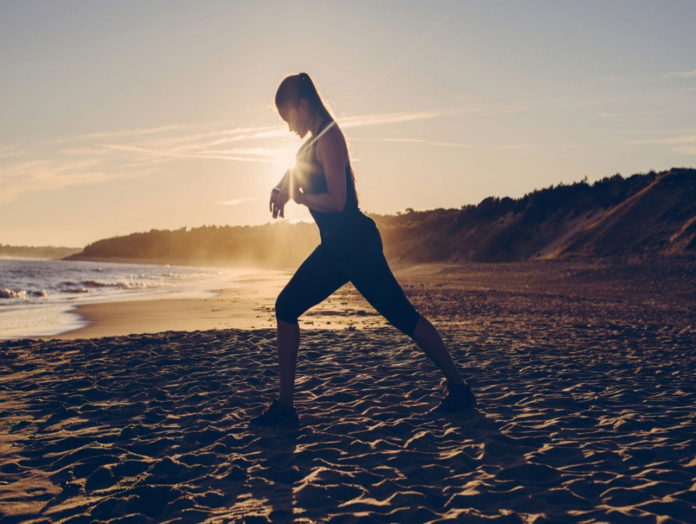By: Dr. Daniel Vigil, a sports medicine doctor who is a health science associate clinical professor of family medicine at University of California, Los Angeles

The Office of Disease Prevention and Health Promotion for the U.S. government recommends that adults should essentially sit less and move more throughout the day.
The office’s guidelines for physical activity state that adults ages 18 to 64 do at least 150 minutes to 300 minutes each week of moderate-intensity, or 75 to 150 minutes of vigorous aerobic activity. They also say to do muscle-strengthening activities two or more days a week.
Older adults — 65 and older — should try to adhere to the basic adult guidelines, but when those can’t be met, they should do as much activity as their body’s and overall health will allow. They should also work on improving their balance in the case of falls.
So, do the majority of Americans follow these minimum guidelines? The answer is a decided “no.” The U.S. Department of Health and Human Services reports that less than 5 percent of adults participate in 30 minutes of physical activity each day, and only 1 in 3 receive the recommended amount of physical activity each week.
Vigil said that when working with his own patients, he looks at three categories of exercise: strength, endurance and balance or stability on one’s feet.
He said that for older adults who are starting to feel the wear and tear of aging, there are easy ways to incorporate all of these activities into your life. An endurance activity could be taking a walk outside or going for a light jog on your treadmill.
Strength exercises could be lifting weights, but for those who find that intimidating, it could involve simple push-ups, knee bends, or squats to “keep the core body strength as high as possible.” Vigil added that balance plays a big role in both of these — if you aren’t stable on your feet, you could easily fall over or break a wrist during exercise.
“There are all sorts of approaches to improving balance. For instance, tai chi is a pretty popular activity that a lot of people are familiar with, it addresses balance, is pretty calming psychologically,” he said.
For those looking for ways to embrace resistance exercises, Vigil said push-ups are easy at-home exercises that most anyone can do. If you don’t have enough upper body strength to do a full push-up, he suggested there are ways to adjust the way you hold yourself up, bending your knees to a surface at an angle and pushing up that way.
For people who have limited mobility or might be living with obesity, for instance, just getting up and out the door a little bit each day goes a long way.
By: Dr. Daniel Vigil, a sports medicine doctor who is a health science associate clinical professor of family medicine at University of California, Los Angeles
The Office of Disease Prevention and Health Promotion for the U.S. government recommends that adults should essentially sit less and move more throughout the day.
The office’s guidelines for physical activity state that adults ages 18 to 64 do at least 150 minutes to 300 minutes each week of moderate-intensity, or 75 to 150 minutes of vigorous aerobic activity. They also say to do muscle-strengthening activities two or more days a week.
Older adults — 65 and older — should try to adhere to the basic adult guidelines, but when those can’t be met, they should do as much activity as their body’s and overall health will allow. They should also work on improving their balance in the case of falls.
So, do the majority of Americans follow these minimum guidelines? The answer is a decided “no.” The U.S. Department of Health and Human Services reports that less than 5 percent of adults participate in 30 minutes of physical activity each day, and only 1 in 3 receive the recommended amount of physical activity each week.
Vigil said that when working with his own patients, he looks at three categories of exercise: strength, endurance and balance or stability on one’s feet.
He said that for older adults who are starting to feel the wear and tear of aging, there are easy ways to incorporate all of these activities into your life. An endurance activity could be taking a walk outside or going for a light jog on your treadmill.
Strength exercises could be lifting weights, but for those who find that intimidating, it could involve simple push-ups, knee bends, or squats to “keep the core body strength as high as possible.” Vigil added that balance plays a big role in both of these — if you aren’t stable on your feet, you could easily fall over or break a wrist during exercise.

“There are all sorts of approaches to improving balance. For instance, tai chi is a pretty popular activity that a lot of people are familiar with, it addresses balance, is pretty calming psychologically,” he said.
For those looking for ways to embrace resistance exercises, Vigil said push-ups are easy at-home exercises that most anyone can do. If you don’t have enough upper body strength to do a full push-up, he suggested there are ways to adjust the way you hold yourself up, bending your knees to a surface at an angle and pushing up that way.
For people who have limited mobility or might be living with obesity, for instance, just getting up and out the door a little bit each day goes a long way.
“Literally getting out the front door can yield health benefits. There is sadly a growing epidemic in this country of obesity and inactivity. For people who are 30, 40, 200 pounds overweight, I suggest they get out of the house and take a walk to the sidewalk or the mailbox. I’ve literally given that advice to patients as a genuine exercise prescription. I tell them to do that once or twice a day for four or five times a week and then, as time goes on, advance their program to include longer walks or brisk walks around a park. It will burn calories and make you move around more,” Vigil said.
“Literally getting out the front door can yield health benefits. There is sadly a growing epidemic in this country of obesity and inactivity. For people who are 30, 40, 200 pounds overweight, I suggest they get out of the house and take a walk to the sidewalk or the mailbox. I’ve literally given that advice to patients as a genuine exercise prescription. I tell them to do that once or twice a day for four or five times a week and then, as time goes on, advance their program to include longer walks or brisk walks around a park. It will burn calories and make you move around more,” Vigil said.
©Copyright – Hector Sectzer

















